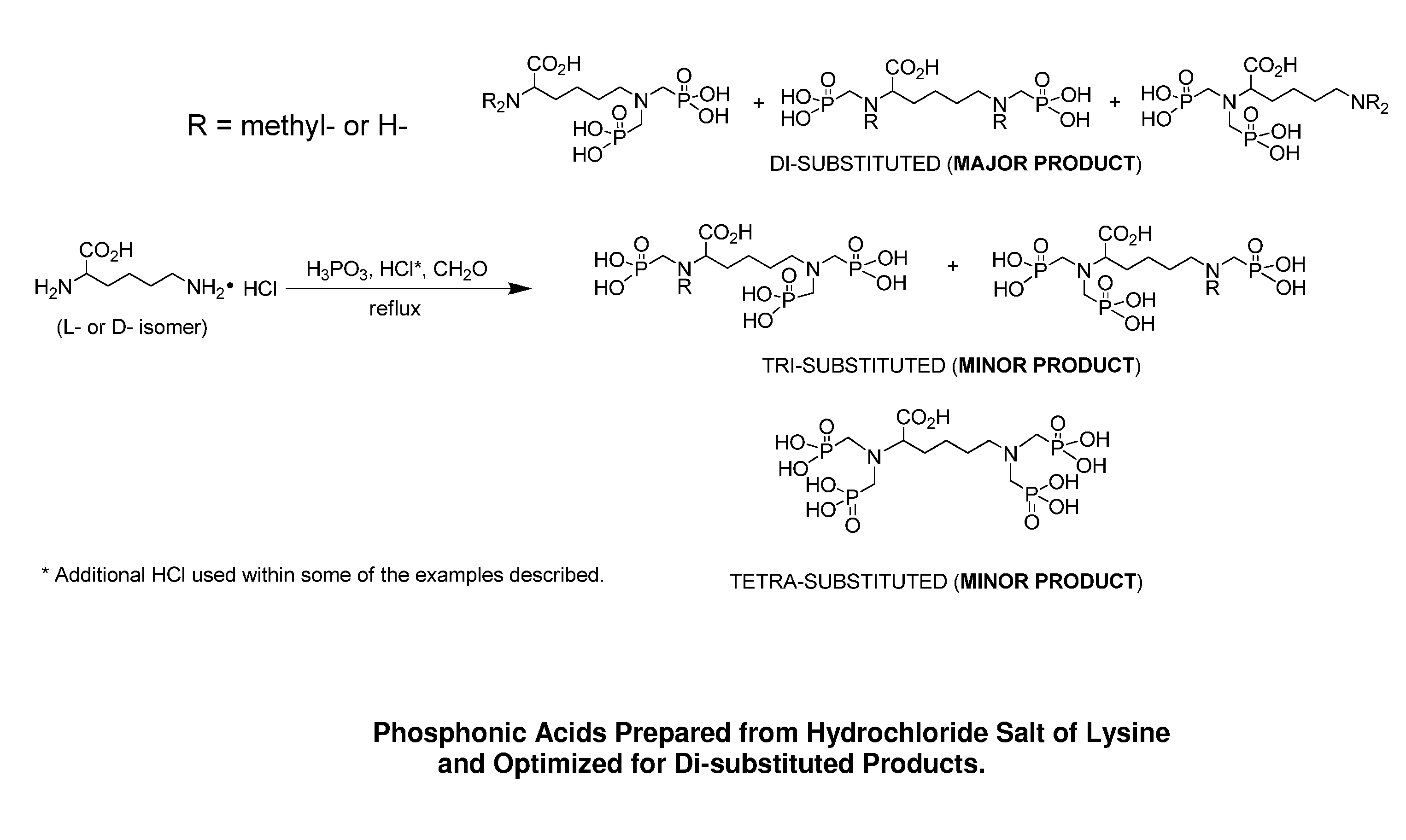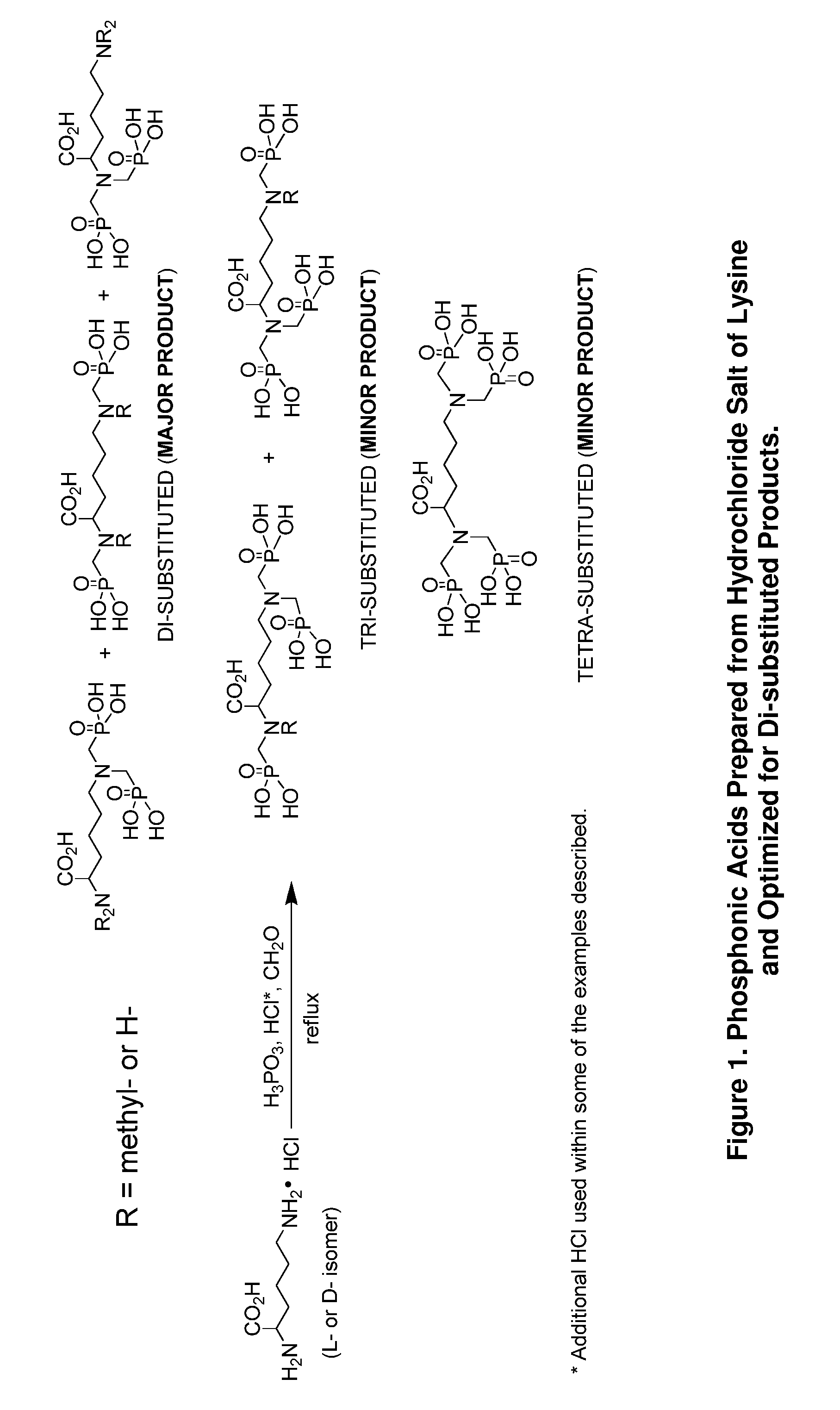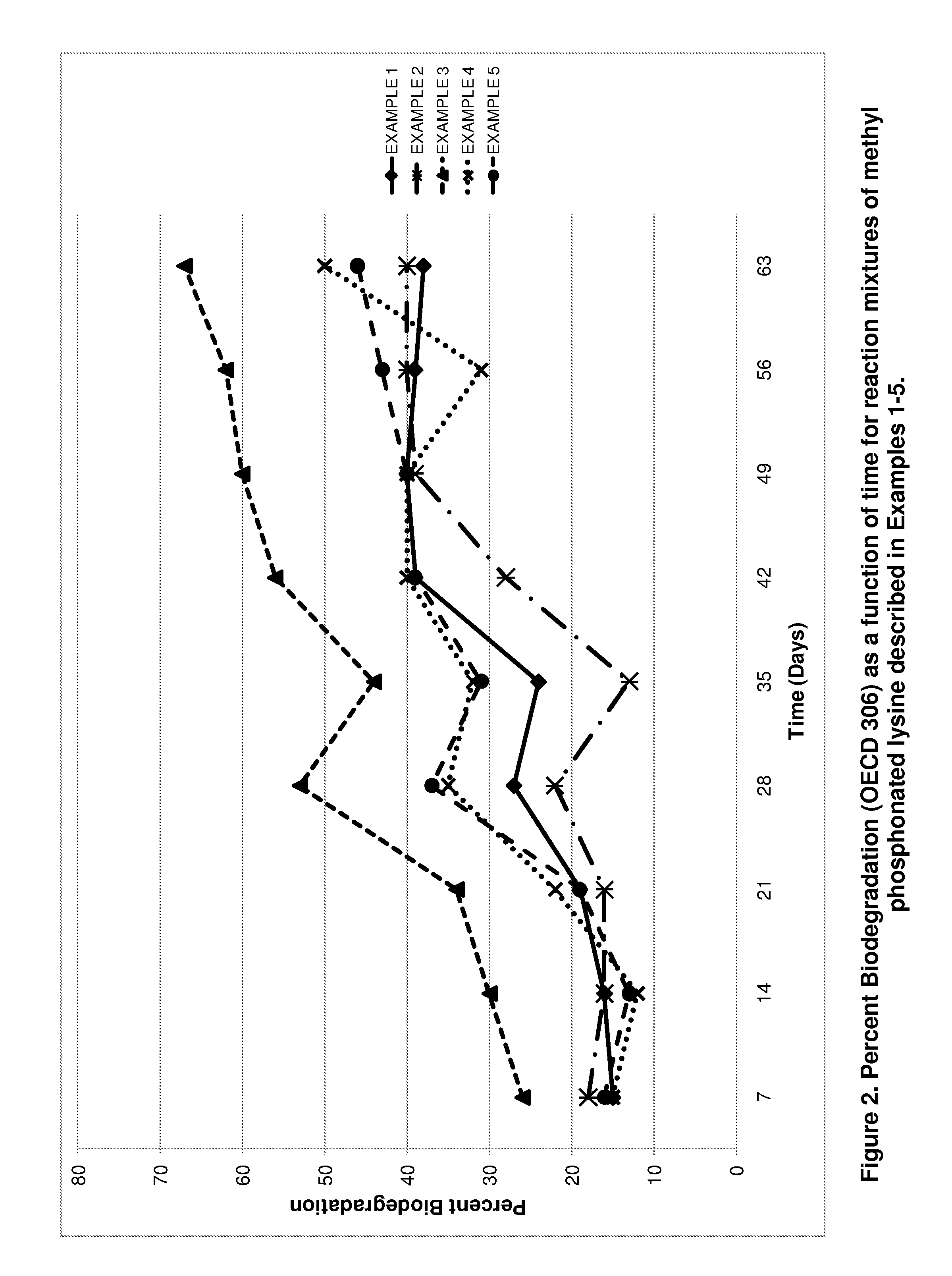Preparation of environmentally acceptable scale inhibitors
a technology of amino phosphonate and scale inhibitor, which is applied in the direction of quary waste water treatment, water/sludge/sewage treatment, chemistry apparatus and processes, etc., can solve the problems of scale accumulation, scale formation, and scale precipitation, and achieve the effect of improving environmental properties
- Summary
- Abstract
- Description
- Claims
- Application Information
AI Technical Summary
Benefits of technology
Problems solved by technology
Method used
Image
Examples
example 1
[0033]To a two hundred fifty milliliter multi-neck flask equipped with a mechanical stirrer, a reflux condenser, a thermoprobe connected to a temperature controller and inlet for nitrogen purge, 63 grams of aqueous phosphorous acid (70%, 0.54 mol, 2 equiv.) was charged. To the stirring acid, 50 grams of lysine monohydrochloride (HCl) (98%, 0.27 mol, 1 equiv.) was charged to the reaction vessel under good agitation, along with 30 grams of deionized water which was added to help dissolve the solid into solution. The reaction mixture was then heated to 93° C. and purged with nitrogen. The solid paraformaldehyde (18 grams, 91%, 0.54 mol, 2 equiv.) was added in equal-weighted portions over a period of time to limit excess heating. Once the addition of paraformaldehyde was complete, the reaction mixture was heated to 110° C. and allowed to reflux overnight. The reaction mixture was then cooled to room temperature and sampled for analysis.
[0034]The resultant phosphonate solution had a soli...
example 2
[0035]The procedure of Example 1 was repeated with 26 grams of aqueous hydrochloric acid (37%, 0.27 mol, 1 equiv.) added to the phosphorous acid before addition of lysine HCl. The resultant phosphonate solution had a solids content of 55% by NVR analysis, 10% chloride level and a CCV of 115 mg CaCO3 per gram sample. Analysis by IC / MSD shows that the reaction mixture contains di-, tri- and tetra-substituted methyl phosphonates in a ratio of 2.2:1.0:1.6.
example 3
[0036]To a three liter multi-neck flask equipped with a mechanical stirrer, a reflux condenser, a temperature probe and inlet for nitrogen purge, 502 grams of aqueous phosphorous acid (70%, 4.34 mol, 1.5 equiv.) was charged. To the stiffing acid, 535 grams of lysine HCl (98%, 2.87 mol, 1 equiv.) was charged to the reaction vessel under good agitation, along with 321 grams of deionized water which was added to help dissolve the solid into solution. The reaction mixture was then heated to 93° C. and purged with nitrogen. The solid paraformaldehyde (142 grams, 91%, 4.31 mol, 1.5 equiv.) was added in equal-weighted shots over a period of time to limit excess heating. Once the addition of paraformaldehyde was complete, the reaction mixture was heated to 110° C. and allowed to reflux overnight. The reaction mixture was then cooled to room temperature and sampled for analysis.
[0037]The resultant phosphonate solution had a solids content of 63% by NVR analysis, 8.4% chloride level and a CCV...
PUM
| Property | Measurement | Unit |
|---|---|---|
| weight percent | aaaaa | aaaaa |
| weight percent | aaaaa | aaaaa |
| diameter | aaaaa | aaaaa |
Abstract
Description
Claims
Application Information
 Login to View More
Login to View More - R&D
- Intellectual Property
- Life Sciences
- Materials
- Tech Scout
- Unparalleled Data Quality
- Higher Quality Content
- 60% Fewer Hallucinations
Browse by: Latest US Patents, China's latest patents, Technical Efficacy Thesaurus, Application Domain, Technology Topic, Popular Technical Reports.
© 2025 PatSnap. All rights reserved.Legal|Privacy policy|Modern Slavery Act Transparency Statement|Sitemap|About US| Contact US: help@patsnap.com



